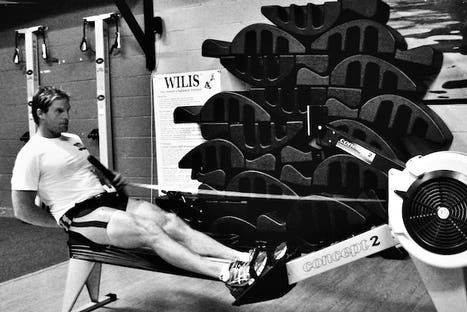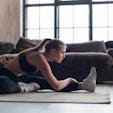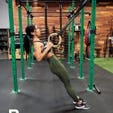Aside from competing in multiple Ironman competitions, Jack Nunn was a gold medalist in 2007 at the Concept 2 Team Indoor Rowing challenge and took silver at the Masters Nationals Open Single Event in 2006. As a member of the US Rowing National Team from 2001-2004 he placed second at the 2003 Pan American Trials in double sculls and claimed a gold medal in Senior 8 and a silver medal in the Elite Double at the US Nationals in 2002. Needless to say, Jack Nunn knows rowing.
Cross-training on the rowing machine during the year and during recovery blocks throughout the season helps swimmers, cyclists, and runners stay injury free and mentally fresh. Those are the key benefits of rowing for triathletes while also trying to swim, bike, and run extreme long distances during an Ironman.
Proper Rowing Technique
THE CATCH: From “The catch,” or start position, into the early drive. Keep your shins vertical and the muscles tight, pulling your belly button up and in, and make a point to retain good posture. Slant the upper body forward, extending powerfully from the hips. Avoid sitting straight up and keeping your shoulders and back too straight. Roll your shoulders and upper-back slightly forward at the front of the rowing stroke.
Most of the muscles in the legs and back are used. The erector spinae muscles of the back are relaxed to allow for trunk flexion, which is provided by the abdominals. The psoas major and minor and the iliacus flex the pelvis and hips. The sartorius muscle rotates the thighs which allows the body to flex between the thighs to obtain maximum reach. The hamstrings and gastrocnemius are contracting while the knees are in flexion. The quadriceps are elongated and stretched, yet the rectus femoris is contributing to hip flexion. The ankles are dorsiflexed by the tibialis anterior. The elbows are extended by the triceps brachii.
THE DRIVE: Begin the “drive” phase by employing your leg muscles with a powerful push off and kicking the knees flat down as fast as possible and hanging with the latissmus and back while holding on to the handle. Push through with your legs, almost as if you are trying to push your feet through the foot-boards into the ground. In a continuous motion, use your hips, back, and abdominals as a lever, transferring the workload to a combination of your legs and the muscles surrounding your core. All the muscles of the shoulder are contracting. These include the supra and infraspinatus, subscapularis, teres major and minor, and the biceps brachii. The scapula is stabilized by the serratus anterior and trapezius muscles. In the upper body, elbow flexion is occurring via the biceps, brachialis, and the brachioradialis muscles are used.
THE FINISH: Resist the temptation to begin pulling with your arms at the finish and grabbing the handle into the body until you’ve completely channeled the power from your legs, abdominal, and back muscles. With legs fully extended use your arms with the momentum of the stroke to pull and squeeze and finish the stroke brushing the handle into your body/mid-abdominals. Keep the shoulders as relaxed and loose as possible with the back in a slight arc as you pull the handle through the finish.
Pretend as if your trying to elbow someone behind you while using all the momentum through the drive at the finish of stroke. The knees and ankles remain constantly flexed as the hips complete a full extension and quadriceps are used. The back extensors are continually contracting, and the upper arms are internally rotated by the contracting latissimus dorsi. The triceps are extending the elbows slightly.
THE RECOVERY: Make sure to keep the handle moving freely at the finish and don’t stop or stick the handle into your body. Let the handlebar pull itself away from your body and swing the body over the knees before the knees come up. The anterior deltoids contract along with the coracobrachialis and biceps, and the upper arms raise slightly as they pass over the extended knees. The abdominals flex the torso, and once the hands have cleared the extended knees, the slide begins its forward motion through ankle dorsiflexion and hip and knee flexion.
Rowing Workouts
[tabs] [tab title=”Short Workout”]5 x 500m on / 2 min off – Row as hard as you can at 28-32 strokes per minute and go for your best time for five 500 meter pieces. Rest for two minutes between each 500 meter piece. Great for anaerobic training and overall muscle strength.[/tab] [tab title=”Medium Workout”]3 x 10 minute on / 5 min easy – Row three 10 minute pieces at moderate to hard pressure in between 24-28 strokes per minute. Row for five minutes at light pressure between each piece. Perfect for aerobic training and muscle endurance.[/tab] [tab title=”Long Workout”]4 x 20 minute / 8 min rest – Row 4 intervals of 20 minutes at steady state moderate pressure in between 20-26 strokes per minute. In between these long intervals, stretch and drink water while getting ready for the next interval. Best workout for Ironman distance triathlon training.[/tab] [/tabs]Rowing Workout Challenge
Measure your overall fitness by racing a 2,000 meter piece. After you’ve rowed, enter your time in the Online Ranking at www.concept2.com and see where you stand with others of your age, gender, and weight class. Your preparation for the 2,000 meter race should fall predominantly into the aerobic area and should continue to be focused on distance, measured both in time and in meters. With this in mind, take my workouts and put them to use on the rowing machine and try to beat my best time on the U.S. National Rowing Team, a 5:57!

)





